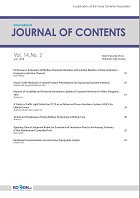- 권한신청
- P-ISSN1738-6764
- E-ISSN2093-7504
- KCI
 ISSN : 1738-6764
ISSN : 1738-6764
A Critical Review of Current Crisis Simulation Methodology
이주락 (경기대학교)
Abstract
This paper is concerned with simulation exercises used to train key response agencies for crisis situations. While ‘multi-agency’ simulations are increasingly acknowledged as a necessary and significant training tool for emergency response organisations, many current crisis simulations are still focused on the revision of existing response plans only. However, a crisis requires a rapid reaction, yet in contrast to an ‘emergency’, the risks for critical decision makers in crisis situations are difficult to measure, owing to their ill-structure. In other words, a crisis situation is likely to create great uncertainty, unfamiliarity and complexity, and consequently should be managed by adaptive or second order expertise and techniques, rather than routine or structured responses. In this context, the paper attempts to prove that the current practices of simulation exercises might not be good enough for uncertain, unfamiliar, and complex ‘crisis’ situations, in particular, by conducting case studies of two different underground fire crises in Korea (Daegu Subway Fire 2003) and the UK (King’s Cross Fire 1987). Finally, it is suggested that the three abilities: ‘flexibility’, ‘improvisation’ and ‘creativity’ are critical in responding to a crisis situation.
- keywords
- Underground Fire, Socio-technical Crises, Simulation, Crisis Management, Flexibility, Improvisation, Creativity.
- 다운로드 수
- 조회수
- 0KCI 피인용수
- 0WOS 피인용수

